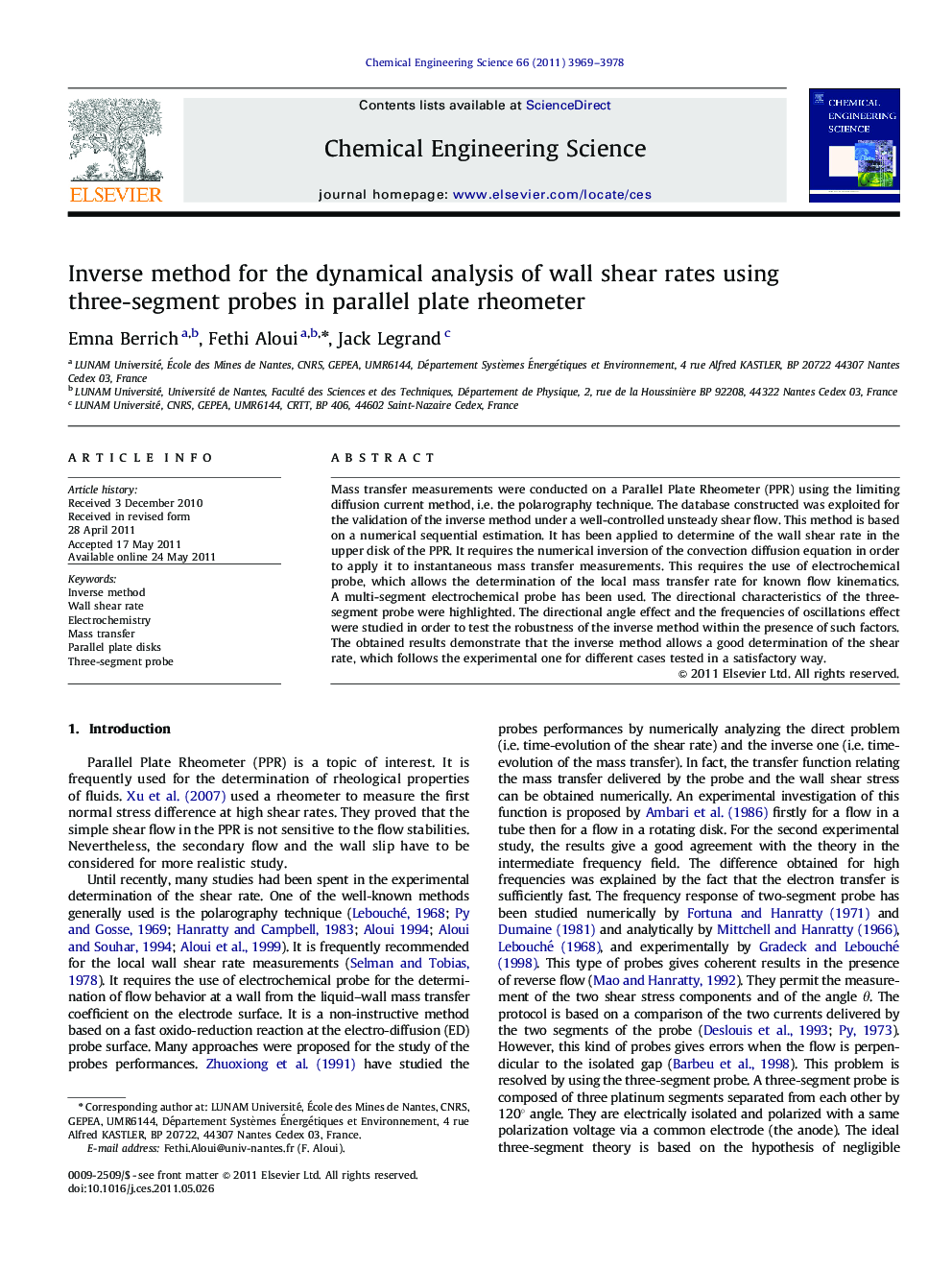| Article ID | Journal | Published Year | Pages | File Type |
|---|---|---|---|---|
| 156483 | Chemical Engineering Science | 2011 | 10 Pages |
Mass transfer measurements were conducted on a Parallel Plate Rheometer (PPR) using the limiting diffusion current method, i.e. the polarography technique. The database constructed was exploited for the validation of the inverse method under a well-controlled unsteady shear flow. This method is based on a numerical sequential estimation. It has been applied to determine of the wall shear rate in the upper disk of the PPR. It requires the numerical inversion of the convection diffusion equation in order to apply it to instantaneous mass transfer measurements. This requires the use of electrochemical probe, which allows the determination of the local mass transfer rate for known flow kinematics. A multi-segment electrochemical probe has been used. The directional characteristics of the three-segment probe were highlighted. The directional angle effect and the frequencies of oscillations effect were studied in order to test the robustness of the inverse method within the presence of such factors. The obtained results demonstrate that the inverse method allows a good determination of the shear rate, which follows the experimental one for different cases tested in a satisfactory way.
►In this paper, mass transfer measurements were conducted on a Parallel Plate Rheometer using the limiting diffusion current method. ► These measurements were exploited for the validation of the inverse method under a well-controlled unsteady shear flow. ► The directional characteristics of the three-segment probe used were highlighted.
